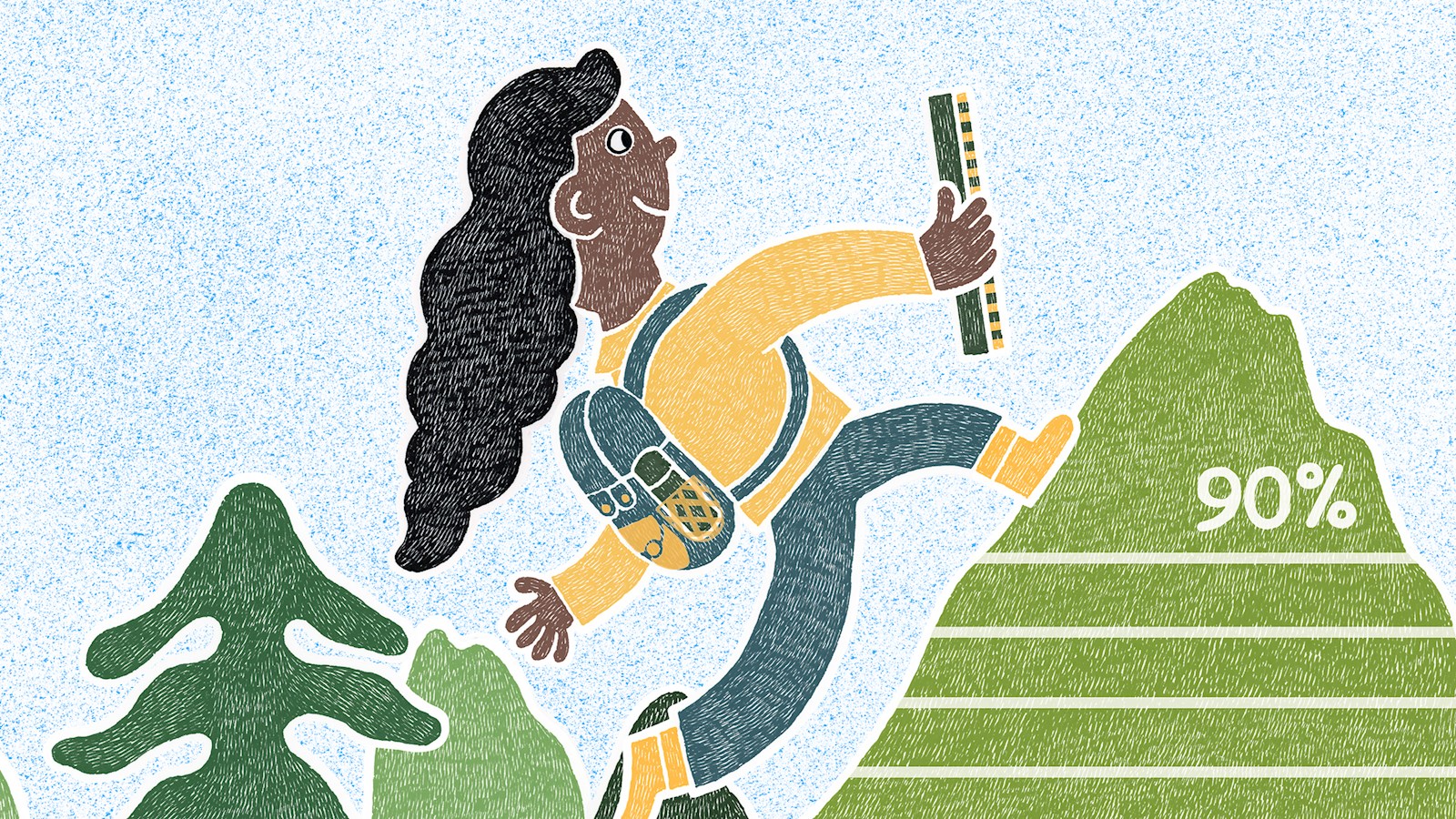
Inspiration drives growth
The desire for inspiration is one of the strongest human drivers of all. And in marketing, too, a lot can be achieved with inspiration, says Peter Petermann
Inspiration. What a huge word. Inspiration as a concept is intrinsically linked to the creative power of humankind. It is derived from the Latin ‘spiritus’ – some may call it esprit; some simply call it soul – and it remains open whether inspiration pertains to some sort of religious spark or our own ability to create something.
Either way, inspiration is about what makes us different from every other being on the planet. It's about creative ideas, inspirations. And one of our characteristics as human beings is that only we are capable of having such ideas. This is exactly why we are constantly looking for sources of inspiration.
People want to be inspired
What inspires us? Good question, right? And it's not easy to answer either, because basically inspiration can come from anywhere. Moreover, it doesn't even have to be a specific source or medium that inspires us – sometimes it's places, or people. Or brands.
In our global social study on inspiration, we found that being ‘outside, in nature’ is the strongest source of inspiration for most respondents. Many people also find animals to be inspiring. In other words, things that don't have to be new or unusual per se – it is much more important for inspiration that our brain can create an emotional connection to the trigger and that the source of inspiration resonates with our own values.
This explains why we find positive human characteristics, such as friendliness, courage or selflessness, to be inspiring – ultimately, we project our own hopes and desires into the behaviour of others. That, in turn, encourages us to change, or at least reconsider, our own behaviour. Inspiration always has two dimensions: the cause and the effect. Something inspires us to do something different than we used to, like exercising more or getting a new job.
We found that the desire for inspiration is universal and extremely strong. A total of 84% of respondents worldwide hope to find more inspiration in the future, and 77% wish there were more inspiring things in the world. Politicians and other leaders are at the top of the wish list for inspiration: 88% of all respondents would like more inspiration from these people. But brands and companies can also play a role: 68% would like brands to do more to inspire us.
And finally, traditional sources of inspiration also play an important role: travel, scientific knowledge, the media and, of course, your own friends.
People find inspiration anywhere
Here is a ranking of the most important sources of inspiration:
- Being outdoors in nature
- Kindness
- Travelling
- Animals / wildlife
- Friends
- Bravery / heroism
- Honesty / integrity
- Movies / TV series
- Reading
- Selflessness / humility
Inspiring brands are more successful
As inspiration plays a paramount role in all areas of life and two-thirds of all consumers also want to be inspired by brands, it is not surprising that brands that are perceived as inspiring typically do a better job at winning at the shelf. As a matter fact, in our study, we were able to demonstrate a clear connection between inspiration and brand growth.
In 63% of the cases examined, increased demand correlates with the characteristic ‘this brand inspires me’ and can be causally attributed to it. Moreover, inspirational brands can charge a higher price (52%) and are more likely to convert at the point of sale (48%). So, no matter which aspect you look at, inspiring brands are more successful.
In other words, inspiration is an economically relevant factor for brands. Brand communication that inspires people is not just nice to have. That creative ideas and purpose-driven campaigns work better than rational product communication has long been proven by marketing science.
And now we know why: the inspirational nature of such ideas is extremely powerful, so, it is definitely advisable to include inspiring aspects in your communication.
In our study, we found that most people are inspired by one of the following six categories: other people; specific experiences; art, design and entertainment; nature, science and technology; more generally through things found online; and above all through stories that are told to us. To identify which of these categories is the right one will warrant a careful strategic analysis of one's own brand and the competitive environment, as well as the category in general.
How we measure inspiration
However, if inspiration really is relevant to business success, if inspiration has a significant and, more importantly, sustainable influence on brand equity, then it is necessary to make inspiration measurable. At Wunderman Thompson, we developed what we call the Inspire Score, which does just that.
Based on one of the world's largest brand studies, the WPP Brand Asset Valuator (BAV), we have developed an algorithm that allows us to measure the inspirational power of brands. The Inspire Score is an indexed measure that indicates how inspiring a brand is perceived to be in comparison with other brands (e.g. within the respective category). Therefore, the Inspire Score is not an absolute, but a comparative value – not surprisingly, as there can be no absolute measure for inspiration.
With this index value, however, we can demonstrate which brands inspire their consumers more – and thus have a better chance of winning at the point of sale. Moreover, in addition to the overall Inspire Score, we can also measure three specific dimensions of inspiration: motivating, magnetic and elevating.
With motivating we indicate how good a brand is at giving a clear and compelling reason to act. Does it give me a clear reason to use it? Does it help me to achieve my goals – in the category, but also broader? Does it help to discover new things?
Magnetic denotes how popular a brand is. You could also say how cool it supposedly is. Do people talk about the brand in a positive way? Does it stimulate imagination, for example, with an excellent creative execution? Do I want to be seen with it?
And finally, elevating – we use this to describe brands that also play a social role. Does the brand have a purpose or is it committed to some broader value? Does it give me the opportunity to realise my ideals? Does it make life better overall?
Can anything be inspiring?
Nowadays, you need to be truly spectacular, shocking even, to break through the clutter in social media. We discovered that what is forbidden is all the more interesting. And will create engagement.
A detailed analysis of your brand's inspirational power – overall and in terms of the three dimensions of inspiration – can help your brand grow.
It is particularly important to create the right balance between the three dimensions. Of course, it is desirable to achieve outstanding values in all three dimensions. But it's not uncommon for brands to drive their overall score by outperforming in a single dimension.
Therefore, it is worth considering carefully which measures you would like to use to inspire your consumers. It is advisable to start with an analysis of the competitive environment. Here, potential ‘white spaces’ quickly become apparent, i.e. opportunities to clearly differentiate your brand from the competition within the individual dimensions.
For example, if you want to position your brand more in the direction of elevating, you could do so with a specific social commitment. The topic of sustainability, or diversity and inclusion, are also well suited for this. Any brand that has already defined a clear purpose could also inspire with a goodwill campaign.
For example, if you want to position your brand more in the direction of elevating, you could do so with a specific social commitment. The topic of sustainability, or diversity and inclusion, are also well suited for this. Any brand that has already defined a clear purpose could also inspire with a goodwill campaign
PR stunts, sponsorship activities and entertainment content, on the other hand, are good for increasing a brand's ‘magnetic score’. In other words, activities that get the brand more talked about or generate buzz drive this dimension, especially in categories that are not usually known for spectacular, inspiring advertising
And finally, motivating: this dimension has a lot to do with how well a brand satisfies the needs of its consumers. Innovations can provide inspiration in this dimension – for example, product innovations, but also new services or new business areas. Useful content, such as explanatory videos or service apps, can also enrich the lives of consumers and thus provide inspiration.
published on
06 December 2022
Category
More in Experience

Let’s add audio for visually impaired audiences
How to make advertising more accessible for visually impaired audiences

The Future 100: wellbeing, humanity, emotion and tech
This annual trend spotter – by WPP’s VML – gives us the context for the new normal for marketing in 2024.

Activating sports events – the ultimate balancing act
WPP Sports Practice takes a look at the art of timing for sports event activation

